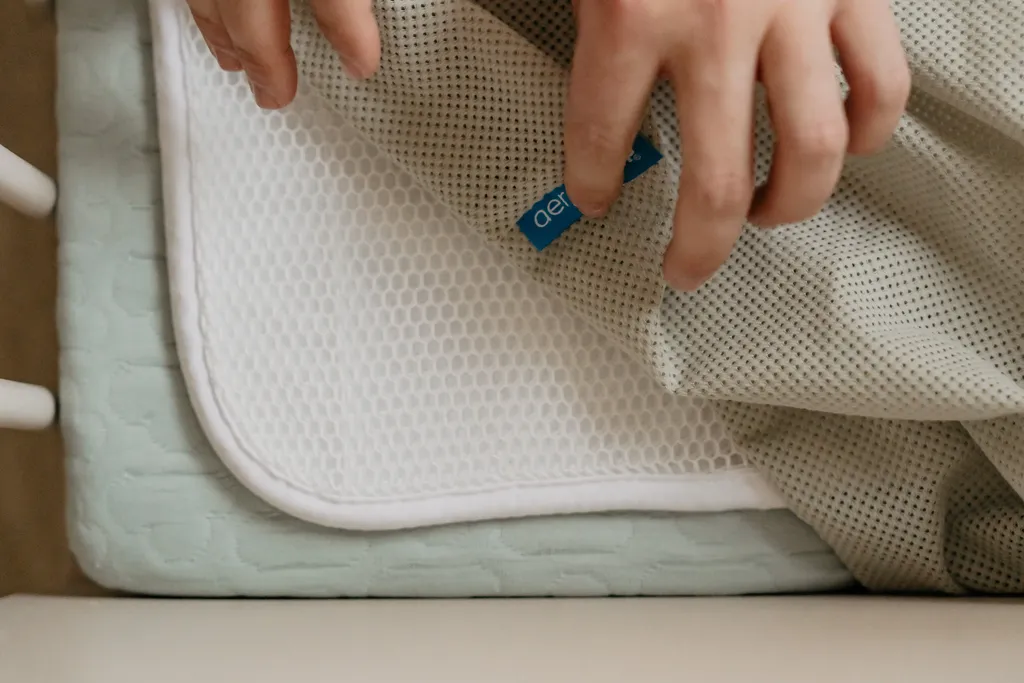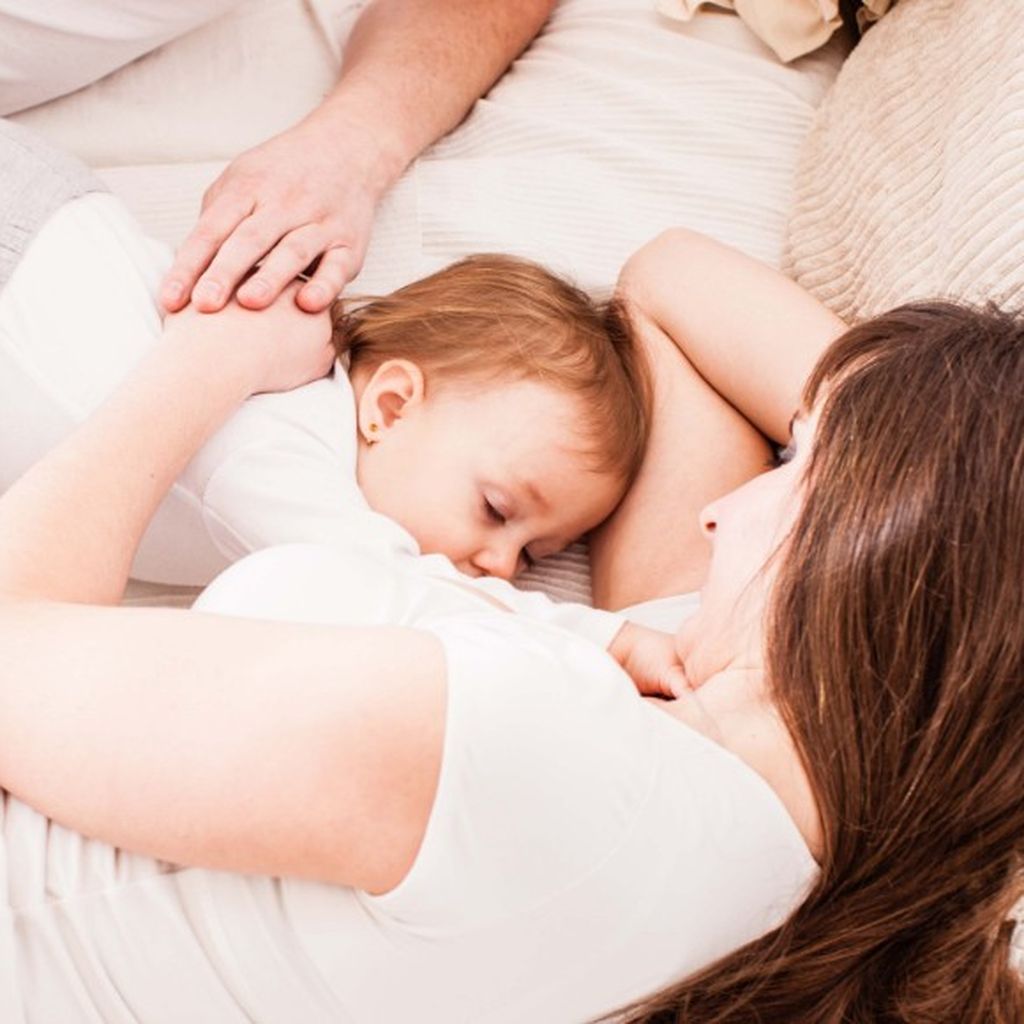AeroSleep 3D Mattress Protector
My top recommendation for safe, stress-free nights, both for your child and for your peace of mind. The breathable 3D structure ensures your child can breathe freely, even if they roll over at night. And during potty training, the absorbent layer is absolutely invaluable. Accident? No problem. Just pop it in the washing machine at 60°C, and it’s dry again in no time.
Night-time potty training: when is your child ready, and how can you make it easier?
Guest blog by sleep expert Nathalie Schittekatte from @snugglesanddreams
As a certified potty training coach and founder of Snuggles & Dreams, I’ve supported thousands of families during their potty training journey. One of the most frequently asked questions? Night-time dryness. When is your child ready? How do you handle it? And what if there are still occasional accidents?
In this blog, I’ll guide you through the key insights around night-time potty training – plus a simple trick that’ll make night-time accidents much easier to manage.

When is a child ready for night-time dryness?
Becoming dry at night isn't just about training, it's about physical development. Your child’s body needs to produce enough antidiuretic hormone (which reduces urine production at night), the bladder must be large enough, and your child needs to make an internal ‘click’ to wake up when their bladder is full.
Most children become dry at night between the ages of 4 and 6. Some transition to night-time dryness shortly after daytime potty training, but for many, it takes weeks, months, or even years. That’s completely normal and nothing to worry about. Up until age 6, it’s perfectly fine to simply wait and let the process unfold naturally.
What if the nappy is dry in the morning?
That’s a great time to gently start talking about the next step: sleeping without a nappy. No need to make a big deal out of it, just ask something like,
“Do you think you'd like to try sleeping without a nappy soon, like the big kids?”
Let your child be part of the decision-making process. Involving them builds motivation. Choose a new pair of undies or pyjamas with their favourite character, make a countdown calendar, or create a little “goodbye” moment for the nappy (e.g., “Let’s put them in a box, you won’t be needing them anymore!”). These small rituals turn the transition into a confidence-boosting milestone.
You could also decide to try it out over the weekend, when everyone is more relaxed and there’s less pressure if it doesn’t go perfectly. Remind your child:“If it doesn’t quite work yet, that’s totally okay. We’re figuring it out together.”
This way, they understand it’s not a test, it’s an adventure you’re on together.
Accidents? No big deal
Accidents are part of the process. Especially at the start, they’re almost unavoidable. And even later on, they might happen from time to time, like during a big change (starting school, moving house, a new sibling, etc.). That’s perfectly normal. Potty training is physical, yes, but it’s also emotional and mental. And just like with any big developmental milestone, progress isn’t always a straight line.
How you react as a parent makes a huge difference. Stay calm and positive. You could say:
“Oops, your bed was wet last night. That’s okay, maybe next time it’ll go better. Let us know if you wake up and need to pee, alright?”
By approaching it as a learning moment, you help your child stay confident and motivated.
If your child starts to feel anxious about accidents or they begin happening more often, it’s completely okay to return to a night nappy or pull-up for a while. That’s not a setback, it’s a caring, supportive way to give your child a little break. It reduces pressure and helps them feel safe again.
What can make this stage a little easier?
A good mattress protector is a real game changer. It catches the accident, saves you from changing the whole bed in the middle of the night, and helps your child feel secure and understood.

The importance of a good mattress protector
Pro-tip! Layer two AeroSleep mattress protectors and two fitted sheets on top of each other. If there’s an accident, simply remove the top layer – and your child is back in a fresh bed within minutes.
Nathalie’s potty training essentials
What if your child still isn’t dry at age six?
No need to worry. As mentioned earlier, it’s entirely normal for children to still be wet at night up to the age of 6. Only after that is it worth discussing with a doctor.
Is your child younger than 6, fully potty trained during the day, and eager to be dry at night? Then you can get started with my masterclass “Becoming Dry at Night”. I guide you step-by-step through this final phase of potty training – so you can confidently support your child in becoming dry at night, without waiting endlessly for that 6th birthday. Often, there are just a few small tweaks needed to help everything fall into place.





